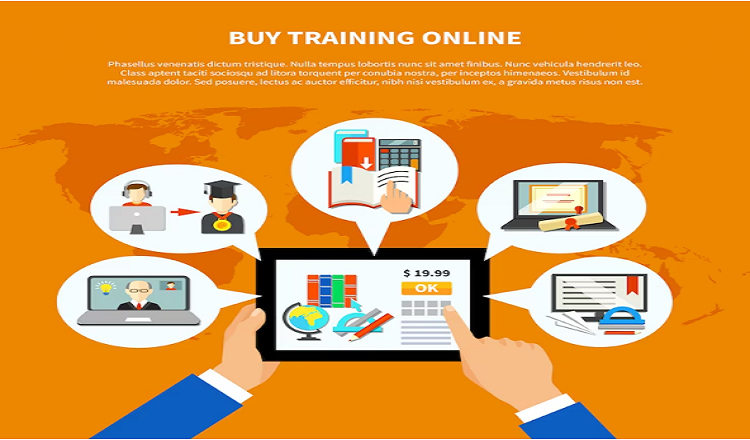Are you still lugging around textbooks and writing notes with a pen and paper? It’s time to enter the 21st century of education with the help of devices! The role of devices in the education and e-learning industry has grown exponentially over the years, making learning more accessible and engaging than ever before.
The importance of technology in education cannot be overstated. With the rise of digital media and the widespread use of devices, students are no longer limited to the traditional classroom setting. Instead, they have the ability to access an endless supply of information, connect with educators and peers from around the world, and learn at their own pace. From laptops to tablets to smartphones, devices have become an integral part of the learning experience.
In this article, we’ll dive into the benefits and challenges of incorporating devices in education, the various types of devices commonly used in the classroom and e-learning platforms, and the role of devices in the future of education. We’ll also discuss the ways in which devices are being used to enhance the e-learning experience and how emerging technologies like virtual and augmented reality are shaping the future of education. So sit back, grab your device of choice, and get ready to learn all about the exciting world of devices in education!
The benefits of devices in education
Devices are revolutionizing the way we learn, and the benefits they bring to education are plentiful. By integrating devices into the classroom and e-learning platforms, educators are creating a more engaging and immersive learning experience for students.
One of the primary ways in which devices enhance the learning experience is through their ability to provide access to a wealth of digital resources. Students can access online libraries, educational apps, and interactive tools that bring concepts to life in ways that traditional textbooks and lectures simply cannot. Additionally, devices allow for real-time collaboration and communication between students and teachers, making it easier for students to ask questions and receive help when needed.
Classrooms and e-learning platforms around the world are implementing devices in creative ways that enhance the learning experience for students. For example, some teachers are using virtual reality to transport students to different parts of the world to learn about different cultures and geography. Other teachers are using augmented reality to bring historical events to life in a way that is much more engaging than reading about them in a textbook.
The advantages of using devices over traditional teaching methods are numerous. For one, devices allow for more personalized learning experiences, as students can work at their own pace and receive customized feedback that is tailored to their specific needs. Devices also enable teachers to track student progress more efficiently and provide immediate feedback, allowing them to identify areas where students may be struggling and adjust their teaching methods accordingly.
In conclusion, the benefits of devices in education are vast and varied. By incorporating devices into the learning process, educators are able to create a more immersive and engaging learning experience that fosters creativity, critical thinking, and collaboration among students. As technology continues to advance, it is likely that devices will continue to play an increasingly important role in education.
The challenges of incorporating devices in education
While the use of devices in education offers many benefits, it also presents its fair share of challenges. One of the most common concerns is the potential for distraction, as students may be tempted to use their devices for non-educational purposes during class time. Additionally, the cost of devices and the infrastructure necessary to support them can be a barrier to entry for some schools and students.
Another challenge is the need for effective teacher training and support to ensure that educators are equipped to incorporate devices into their teaching methods. This requires ongoing professional development, which can be time-consuming and costly. Furthermore, not all teachers may be comfortable with technology, which can result in resistance to change and reluctance to incorporate devices into the classroom.
Despite these challenges, there are examples of successful implementation of devices in education that demonstrate how these obstacles can be overcome. For instance, some schools have implemented strict policies and guidelines to minimize distractions and ensure that devices are being used for educational purposes only. Other schools have established digital citizenship programs to teach students about responsible device use and online safety.
To prepare teachers and students for the use of devices in the classroom, it is essential to provide comprehensive training and support. This includes professional development for teachers, ongoing technical support for students, and access to resources and educational materials that demonstrate best practices for incorporating devices into the learning environment. It is also important to create a culture of collaboration and communication between teachers and students to ensure that everyone is on the same page and working toward the same goals.
In conclusion, while there are challenges to incorporating devices in education, they can be overcome with careful planning, effective policies and guidelines, and comprehensive training and support for teachers and students. By doing so, educators can create a more engaging and effective learning experience that prepares students for success in the digital age
Types of devices used in education
The use of technology in education has given rise to a variety of devices that have become commonplace in classrooms and e-learning platforms. Laptops, tablets, and smartphones are just a few of the devices that are used to enhance the learning experience.
Laptops are a popular choice among educators due to their versatility and power. They allow for easy multitasking and can handle more complex tasks such as video editing and coding. However, they can be bulky and expensive, which can be a barrier to entry for some students.
Tablets are a lightweight and portable option that is ideal for younger students and for tasks such as note-taking and reading e-books. They are also more affordable than laptops, making them more accessible to a wider range of students. However, they may not be as powerful as laptops and may not be suitable for more complex tasks.




